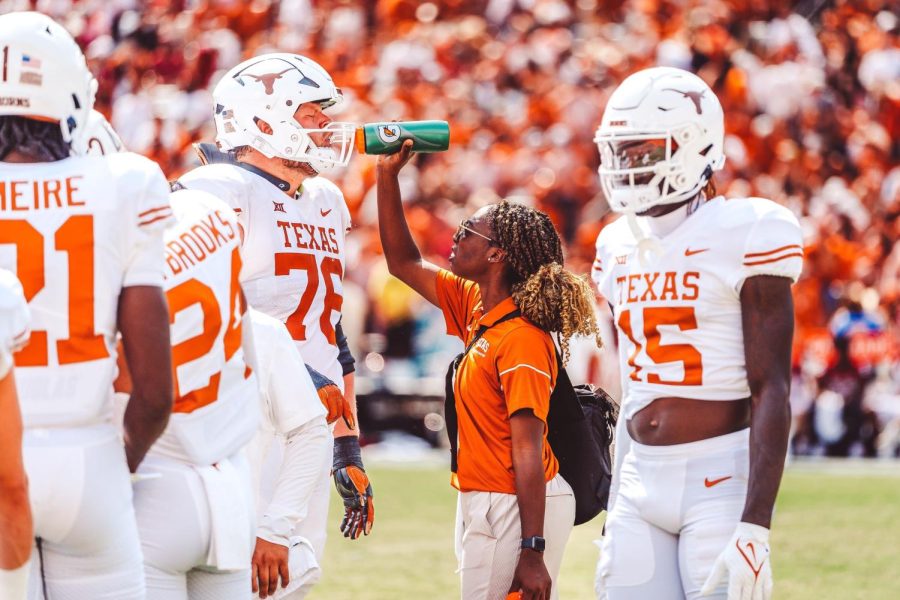‘It becomes your life’: Athletic training students’ arduous work often goes unappreciated
January 26, 2023
Students in the athletic training major spend more time at practices and games than the student athletes, but see little recognition for their hard work.
UT’s athletic training major currently works with 20 different sports at Texas and with various high schools in the Austin area. These students spend many hours a week in the classroom and on the field or court working directly with student athletes to learn essential skills to become athletic trainers.
Early and long hours are common for students in the program.
“We typically have morning practices,” said Dasani Vaughters, a junior working with the football team. “Our days can start (around 6 a.m.) when we’ll go in for rotations or clinicals.”
Senior Sarah Clifford, who works with the volleyball program, said she spends close to 30 hours outside of class working with the team every week.
“It is a very big time commitment,” Clifford said. “Whenever you’re at a sport, it becomes your life. It doesn’t get recognized a lot. We don’t hear many ‘thank you’s’ or a lot of good gratitude.”
Clifford and other athletic training students attend all practices and games, both home and away. While it varies for different sports, the arrival time for football games is five hours before kickoff so students can set up the field, the athletic training room and the locker room.
Athletic training students spend most of their time working directly with athletes, resulting in a high level of medical proficiency. The first year of the major is spent in a direct observation program before students are placed into the major.
Once students are placed into a sport within the major, they learn and take on all of the responsibilities of being an athletic trainer.
“We are all very focused on what we have to do with taping and hydration,” said Victor Delgado, a junior working with the football team. “Most players will blast music in the locker room. Everyone is always hyping each other up. It’s a very energetic and enthusiastic environment.”
Once the players take the field, athletic training students take on various roles and responsibilities.
When the game starts, these responsibilities range from standing in the south endzone tunnel as runners, giving water to referees at timeouts on the visiting sideline and being a “visiting liaison,” or point of contact, for visiting teams.
On the home sideline, students give water to players on the benches and during timeouts, while also making sure the Gatorade coolers are fully stocked.
For volleyball games, Clifford has similar roles, arriving early to set up practice and staying late to clean up after the game.
Clifford said for a 7 p.m. volleyball game, she typically arrives around 2 p.m. to set up for practice and help tape and treat athletes. After practice ends, Clifford continues setting up the court for the game. After the game, she helps break down equipment and treat injured players. A typical game day is usually seven or eight hours and Clifford said she goes home around 9-9:30 p.m.
Despite all of the work the athletic training students do, they often go unnoticed by fans, but not the athletes, according to Delgado.
“We’ll be halfway through the semester, and (the athletes) are like, ‘Damn, you guys are earlier than us,’” Delgado said. “Athletic training is a very underappreciated profession that is demanding more respect right now.”
Recently, athletic trainers have started to get more recognition, especially after Damar Hamlin collapsed on the field in the Buffalo Bills’ game against the Cincinnati Bengals on Jan. 2. As the first responders, athletic trainers provided CPR to Hamlin on the field, saving his life, showing the crucial role athletic trainers play on and off the field.
“(Athletic trainers are) the ones on the ground every day with the athletes,” Vaughters said. “They can do anything from rehabbing a dislocation to dealing with a stubbed toe and rehabbing ACL tears.”












